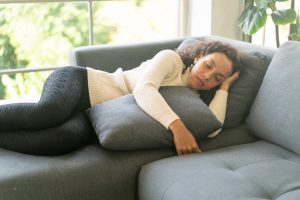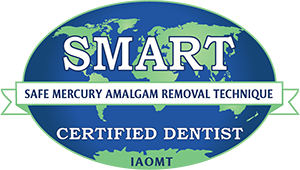Napping — Is It Good or Bad?
May 18, 2022

According to one estimate, about one-third of Americans take a daily nap. Are you among them? If so, you might wonder if your habit is a good thing or a bad thing. On the bright side, a short nap is usually much more effective at beating drowsiness than an extra cup of coffee. However, falling asleep during the day can also be a sign that you have an unaddressed medical condition, such as sleep apnea. Let’s talk more about the relationship between napping and sleep apnea in Southlake.
What Is Sleep Apnea?
Sleep apnea is a condition characterized by multiple pauses in breathing throughout the night. These episodes, called apneas, disrupt the sleep cycle and prevent an individual from getting an adequate amount of high-quality rest. In the most common type of sleep apnea (obstructive), the pauses in breathing are caused by tissues in the throat that block the airway.
Napping Can Be a Sign of Sleep Apnea
In most cases, people who nap do so because they didn’t get enough rest the night before. If you regularly spend 7 – 9 hours sleeping and still find that you need to take a nap every day, that is an indication that your nighttime sleep is not doing what it should for you. You might have sleep apnea.
Here are some other sleep apnea signs to watch out for:
- Loud, frequent snoring
- Observed pauses in breathing
- Frequent nighttime urination
- Often waking up with a sore throat or headache
- Waking up gasping for air
If you believe that you have sleep apnea, talk to a medical professional about arranging a sleep test. After you receive an official diagnosis, you can learn about your treatment options. Many people find that a custom oral appliance, which moves the jaw forward to keep the airway open, is a convenient solution.
Tips for Napping with Obstructive Sleep Apnea
Once you begin sleep apnea treatment, you might find that you no longer need to nap because your nighttime sleep has improved so much. However, you may still occasionally want to lie down for some daytime shuteye. To get the most out of your nap, you should:
- Use your treatment. Carry your oral appliance with you so if you take a power nap in your car or office, you can protect your airway while you are asleep.
- Keep the naps short. Restricting naps to 30 minutes or less lessens the chances that they will interfere with your nighttime sleep. You should also try to nap early in the afternoon (before 3:00PM).
- Get comfortable. Napping in your desk chair or with your head on the arm of a couch may cause aches and pains that make it difficult to sleep at night.
Napping can be a powerful help to get you through the day — but it in some cases, it points to a serious medical condition. Stay alert for signs of sleep apnea so that, if necessary, you can seek treatment and start enjoying higher-quality rest.
Meet Dr. Thomas
Dr. Preetha Thomas is a holistic dentist in Southlake who is deeply interested in the overall health of her patients. If you are struggling with sleep apnea or are interested in learning about oral appliance therapy, she would be happy to speak with you. Contact our office at 817-912-1218.
No Comments
No comments yet.
RSS feed for comments on this post.
Sorry, the comment form is closed at this time.




